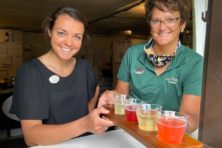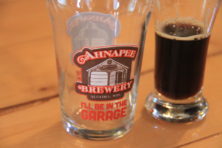Wine Trails: A Sense of History at von Stiehl
- Share
- Tweet
- Pin
- Share
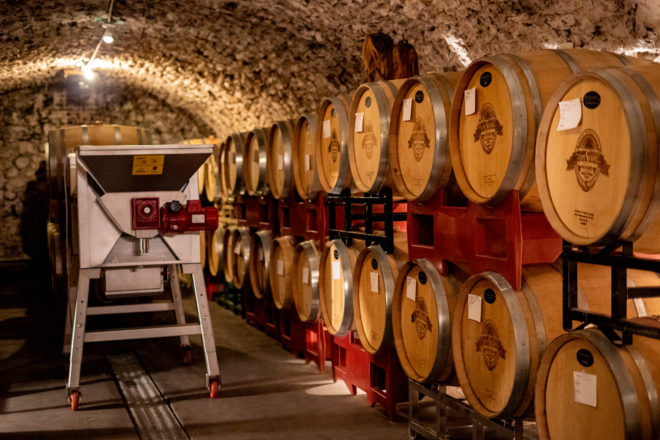
As I walked toward the impressive stone structure on Navarino Street in Algoma that’s home to von Stiehl Winery, a plaque on the wall drew my attention. It certified that the building is listed on the National Register of Historic Places. The inside of the building was built in 1868 and served as the original home of Ahnapee Brewery. Original wooden floors and ceiling, stone walls and an ornate bar that covered two of the walls in the tasting room left me with a slight sense of awe and intimidation.
Anthony Bilwin, von Stiehl’s general manager, greeted me and took me upstairs to talk wine in general and von Stiehl in detail. The meeting room mirrored the ambience of the rest of the building with dark wood, muted light and wine bottles covered with medals earned in prestigious wine competitions.
I was slightly overwhelmed by an aura of history and class, but as our conversation progressed, my self-consciousness slowly eased. Anthony had the ultimate professionalism of a Left Bank Bordeaux – his favorite wine region – and the approachability of a semi-dry Riesling, one of von Stiehl’s signature wines.
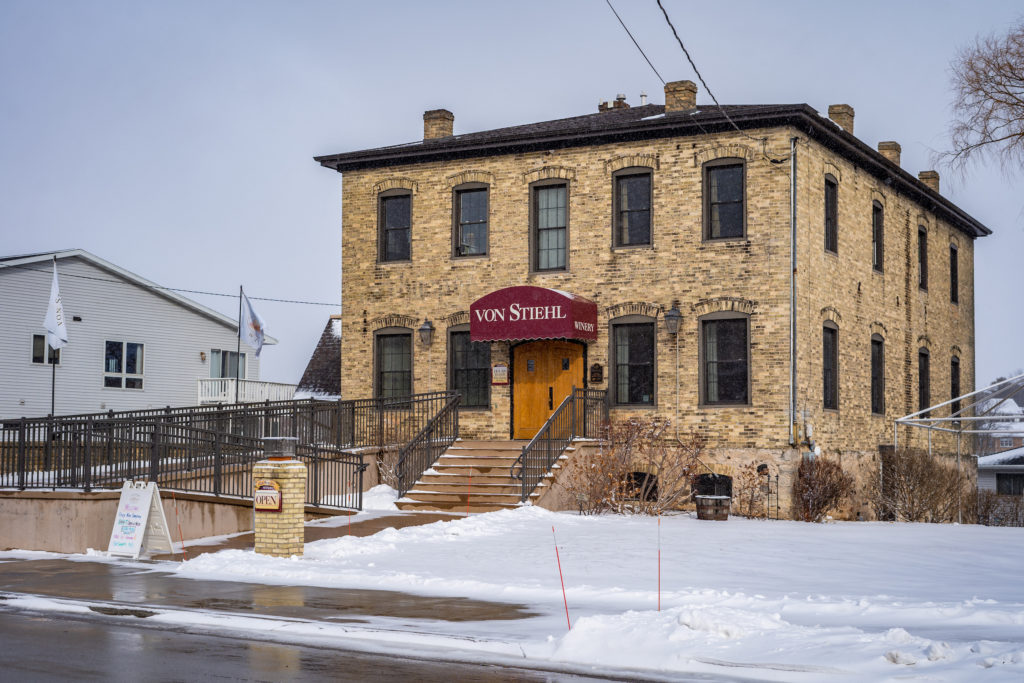
Anthony said that to understand what von Stiehl offers, you must both respect the history of the winery and appreciate how truly innovative its winemaking practices are.
In 1967, Doc Stiehl began by making a sweet cherry wine and wrapped his bottles in the same plaster that he used to set his patients’ broken arms.
Aric and Brad Schmiling now own and run the winery and continue to produce cherry wine out of respect for Doc Stiehl – and because their loyal customers demand it. But the portfolio of wines has expanded significantly, and on average, it consists of 50-60 wines and hard ciders that are made, for the most part, from California and Washington grapes and Door County fruit.
I asked Anthony to describe what a wine drinker could expect from von Stiehl.
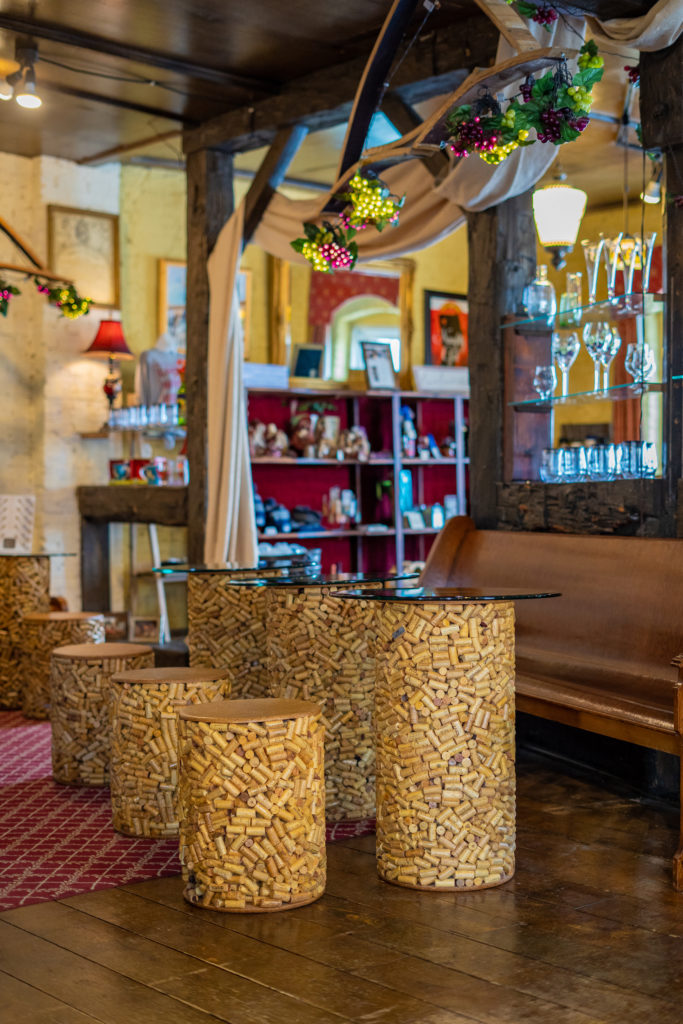
“A California wine experience in Wisconsin,” he said. “A large selection of quality wine made from grapes grown in the most respected regions on the West Coast, complimented by less serious, but equally enjoyable wines and ciders made using fresh local fruit.”
von Stiehl is the third-largest maker of wine in Wisconsin and continues to grow. Anthony gave me a tour of the entire campus, which includes underground tunnels that were originally used to transport ice from Lake Michigan to homes and businesses in Algoma and were lined with oak barrels of aging red wine. He then took me to the modern production rooms, which incorporate cutting-edge technology.
I asked Anthony about the future of Door County as a respected wine region, and his optimism was guarded. He said that, in most people’s minds, Wisconsin wine doesn’t exist outside of the state. von Stiehl has gained the respect of its customers from the Chicago and Twin Cities areas and earned many awards, but being a Door County winery holds little significance for many wine drinkers. Anthony believes that the peninsula’s wineries, despite their ability to produce quality wines, will struggle with the “sweet cherry wine stigma.”

He talked about the importance of continuing to produce high-quality varietals using West Coast grapes and to grow the hard ciders that incorporate local fruit.
Anthony also noted that the tasting-room experience and the colleagues who work there are critical. Leading customers through the tasting process and helping them to find favorite wines within the winery’s large portfolio require excellent interpersonal skills: the ability to ask the right questions, listen to the answers and match what tasters describe to the available wines.
Drinking wine, Anthony said, is a sensory experience – an immersion that begins anew with each one tasted. Simply put, there’s a story behind every wine.
Jim Schnaedter describes himself as a wine appreciator, but not an expert. “I love drinking it, pouring it, talking about it and writing about it, but the more I do of each, the more I learn of what I don’t know about it.” He sets out to discover Door County wines and their makers in this series.



